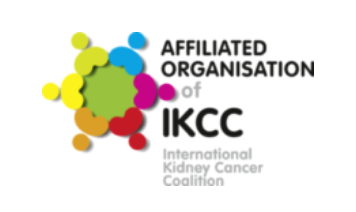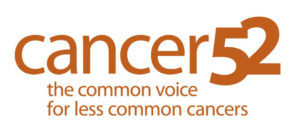Nephrectomy guide
Sarah’s Help Sheet: NEPHRECTOMY
This is a simple guide, written by a patient, to help you understand what to expect when you have just received a kidney cancer diagnosis and the treatment option recommended is a nephrectomy.
Being told that you are about to have this type of surgery and planning your recovery can be a daunting prospect. This guide has been put together by speaking to other kidney cancer patients, who themselves have had experience of this type of surgery.
What is a nephrectomy?
Nephrectomy is the surgical procedure for removing the kidney, or part of the kidney and, for kidney cancer patients, most importantly the removal of the tumour also.
The removal of the whole kidney is called a “Radical Nephrectomy” – this involves removing the entire kidney and sometimes the adrenal gland that sits at the top of the kidney, together with the fatty tissue surrounding the kidney.
The removal of part of the kidney is called a “Partial Nephrectomy” – this is when only the tumour/ diseased portion of the kidney is removed leaving part of a functioning kidney.
In some cases surgery can be performed by laparoscopic surgery (keyhole) and this should be discussed with your Urologist when you discuss the types of surgery available.
What to expect prior to your surgery
You will be given a date for your surgery and, prior to that date, you will attend a pre-assessment appointment where you will normally have your bloods, urine sample, height, weight and MRSA swabs taken and usually an ECG is carried out.
You will speak to an anaesthetist who will take some background information from you and explain to you fully what will be happening on the day of the surgery, during your surgery and what to expect afterwards.
This is a good opportunity to ask any questions that you may have; leading up to this appointment can be an extremely anxious time and it is easy to forget what to ask at the appointment so it is a good idea to write any questions down and take notes with you to go through with the Doctor.
The anaesthetist will go through your medical history thoroughly with you and you will be asked about any current medications and other Illnesses and if you are a smoker. If you happen to be taking supplements like vitamins, fish oils etc. it is advisable to inform the anaesthetist because some supplements may affect the anaesthetic so you may be advised to stop them prior to your surgery and not wear nail varnish.
You will also be advised to avoid alcohol and to stop smoking. You will be given a special bottle of surgical wash to be used prior to your procedure; this will be explained to you by the nurse who gives it to you.
During this appointment the anaesthetist should also discuss with you the risks of the surgery, healing times and what type of pain relief is offered. You might be offered either a patient-controlled analgesia (PCA) – which is a painkiller device that you can control and it releases painkiller into the bloodstream via a drip. Alternatively you will be offered an epidural – which is a painkiller and local anaesthetic given directly into the spinal nerve system and this involves inserting a very fine tube into your back at the time of surgery through which these drugs are given.
What to take with you into hospital
When packing your bag for hospital the following items have been suggested by other patients:
- Two changes of loose clothing/pyjamas, front opening is advisable – no tight waistbands
- Light dressing gown
- Non-slip slippers
- Book or some magazines
- Wet Wipes (great for freshening up when you are not able to easily move)
- Natural, unperfumed, soap and some disposable flannels
- Small box of soft tissues
- Earplugs (hospital wards can be noisy places)
- Music/headphones/radio/iPad/mobile phone (set to silent or vibrate and check with the ward manager that they allow mobile phone use – which can be annoying to other patients trying to rest)
- Your own favourite bed pillow in a coloured pillowslip to make sure it stays with you! (you will need to rest and get as much sleep as possible- hospital pillows can be uncomfortable).
- Small clock rather than a treasured or special watch
- Special photograph of family or friends for comfort.
- Soft toy perhaps (to keep you company)
- Straws for sipping small amounts of fluid when you have trouble sitting up straight.
- Sanitary towels for ladies still menstruating (this type of procedure may cause an unexpected cycle)
- Small change and £1 coins for telephone, internet access or newspapers (often a trolley comes around with newspapers for you to buy)
- Vaseline or Lip balm for dry lips
- Dry Shampoo (Washing hair can be very difficult at first, many use dry shampoo which is great for freshening your hair up)
- Phone/Tablet/IPad (it’s advisable to check that there is a lockable cabinet next to your bed on the ward if taking in valuables)
- Mints or fruit sweets or chewing gum (your mouth may feel very dry)
- Notepad and pen for notes or to start a diary
- Bottle of Ribena or similar fruit juice – you will be expected to drink plenty of water and this may make it more palatable
- Small soft cushion is useful to hold gently against the wound(s) when you cough or need to move and for the drive home
What to expect on admission
Some people are asked to go into hospital 24 hours prior to their surgery and others on the actual day. Usually the anaesthetist visits you on the ward and in some cases the surgeon does too. You will have your abdomen marked where the incision will be and be talked through what is happening again in detail. This is your opportunity to ask any questions.
This can be an anxious time so it is advisable to have somebody with you.
You are likely to be fitted and put into surgical stockings. These help prevent Deep Vein Thrombosis (DVT) and some patients are fitted with a cannula on the ward prior to going to theatre.
When it is your allotted time you will be taken down to theatre (just because you may have stayed in overnight or been asked to arrive at 7am this does not mean that you will be first to go to theatre, it really does depend on how many procedures the surgeons have booked in on that day and theatre times etc so try not to worry too much if you are not first to go to theatre)
What to expect after the procedure
Everybody deals with this type of surgery differently and a lot depends on what type of surgery you have had but most people will say that you will inevitably feel uncomfortable afterwards. With the pain relief and help from the ward staff you will be made as comfortable as possible. Some people will go straight on to a ward and others may go into a high dependency unit (HDU) or intensive care unit (ICU), all depending upon what type of procedure you have had.
You are watched very closely immediately after the surgery. Usually the nurses come around throughout the night to take your temperature and blood pressure, this is reassuring and also an opportunity to speak to them if you are feeling any discomfort.
You will be “nil by mouth” immediately following surgery and will have a drip providing you with fluids until you are able to eat and drink normally. You may also have a catheter in place, which will be taken out after a couple of days usually. Sometimes, when a catheter is removed, you will have a bladder test, called the TWAT test. In this case you are required to drink a certain amount of water, go to the toilet and then a simple ultrasound of your bladder may be carried out (usually carried out at your bedside) to ensure that the bladder is working correctly.
You will also have a drain, which is used to collect blood, fluids etc. from the surgery wound site. This will usually be removed before you are discharged.
You will find that once you start passing wind this is when your bowels are returning to normal. Using your bowels, at first, can be a problem for some patients. Don’t strain to go to the toilet! Don’t suffer in silence; ask for something to help move things along if you need it.
Usually the Surgeon will visit you the day after your surgery to see how you are and discuss how the surgery went with you.
You will be expected to sit out of bed in the chair next to your bed as soon as possible, this is to aid healing and prevent blood clots. You will be expected to walk as soon as possible and to start walking around the ward within two days, or even sooner.
Going home after surgery
You will not usually be discharged until all drips and drains have been removed and you are eating, drinking and going to the toilet normally. You will also have a blood test and the results checked before discharge. A District Nurse may be put into place to visit you at home to check on and change any dressings, you will also be given any pain relief and other medications that you are currently taking.
Returning home after the surgery can be a daunting prospect. It is advisable to use a cushion/pillow for the journey home in the car as the seat belt can cause discomfort. Ensure that you have adequate pain relief at home.
Recovery is different for everybody. You have to take each day as it comes and, over time, you will notice that things do become easier. It can be frustrating if you feel that you are not recovering quickly enough but you must pace yourself, no heavy lifting for at least six weeks, gentle exercise, especially walking, helps.
Try to wear loose clothing, as it is easier to dress and undress.
Recovery time after abdominal surgery varies but generally you should feel improvements after 6-12 weeks. During the first 6 weeks though the following is advisable:
- You should not drive until you are able to do an emergency stop and twist to look behind you (it is also advisable to make your insurance company aware of your situation)
- Don’t pick up children, or lift any heavy objects or do any heavy housework or hoovering
- Depending on type of work, avoid returning to any occupation that involves heavy lifting or too much exertion or constant sitting – a phased return to work is preferable – talk to your boss or HR Manager
- Avoid getting the wound wet when bathing or showering (cling film is very good for wrapping around the waist to keep the wound dry).
Please help other patients:
Please keep us updated with useful information that will help other cancer patients. You can email us with your tips so we can regularly add to this resource.
Thanks to all the KCSN members for their input, and especially to Sarah for her patience and willingness to collate this information to help and support others.
Written May 2016
Download a pdf of this help sheet here: Nephrectomy guide


